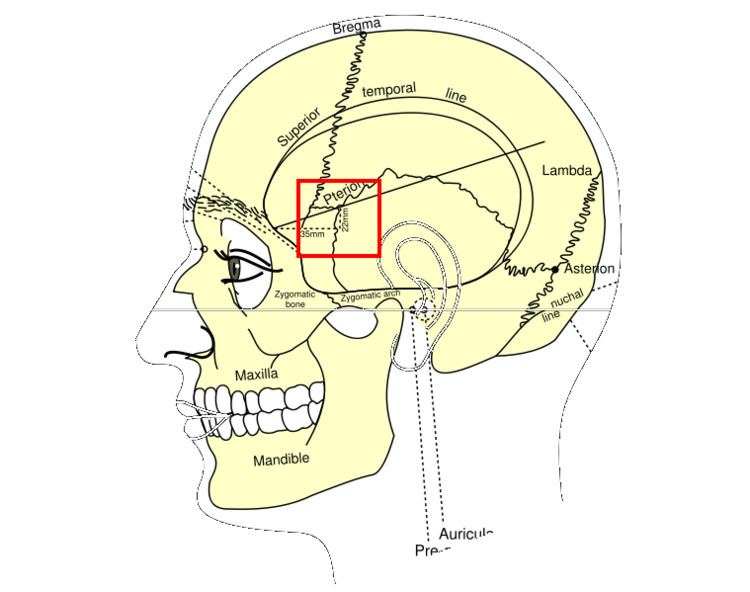Latin Pterion TA A02.1.00.019 | Dorlands/Elsevier p_41/12678391 FMA 264720 | |
 | ||
The pterion is the region where the frontal, parietal, temporal, and sphenoid join together. It is located on the side of the skull, just behind the temple.
Contents
Structure
The pterion is located in the temporal fossa, approximately 2.6 cm behind and 1.3 cm above the posterolateral margin of the frontozygomatic suture.
It is the junction between four bones:
These bones are typically joined by three cranial sutures:
Clinical significance
The pterion is known as the weakest part of the skull. The anterior division of the middle meningeal artery runs underneath the pterion. Consequently, a traumatic blow to the pterion may rupture the middle meningeal artery causing an epidural haematoma. The pterion may also be fractured indirectly by blows to the top or back of the head that place sufficient force on the skull to fracture the pterion.
Etymology
The pterion receives its name from the Greek root pteron, meaning wing. In Greek mythology, Hermes, messenger of the gods, was enabled to fly by winged sandals, and wings on his head, which were attached at the pterion.
